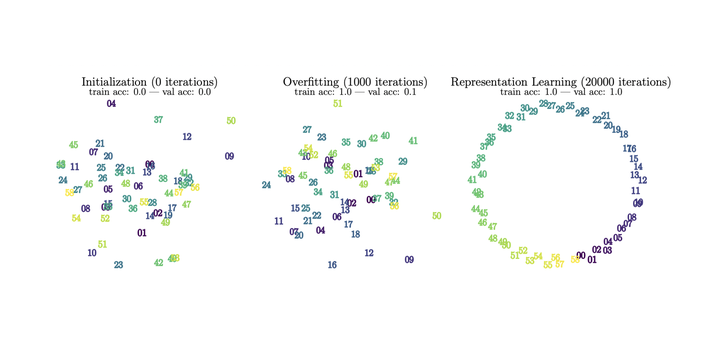Towards Understanding Grokking: An Effective Theory of Representation Learning
 Visualization of the first two principal components of the learned input embeddings at different training stages of a transformer learning modular addition. We observe that generalization coincides with the emergence of structure in the embeddings.
Visualization of the first two principal components of the learned input embeddings at different training stages of a transformer learning modular addition. We observe that generalization coincides with the emergence of structure in the embeddings.Abstract
We aim to understand grokking, a phenomenon where models generalize long after overfitting their training set. We present both a microscopic analysis anchored by an effective theory and a macroscopic analysis of phase diagrams describing learning performance across hyperparameters. We find that generalization originates from structured representations whose training dynamics and dependence on training set size can be predicted by our effective theory in a toy setting. We observe empirically the presence of four learning phases; comprehension, grokking, memorization, and confusion. We find representation learning to occur only in a “Goldilocks zone” (including comprehension and grokking) between memorization and confusion. Compared to the comprehension phase, the grokking phase stays closer to the memorization phase, leading to delayed generalization. The Goldilocks phase is reminiscent of “intelligence from starvation” in Darwinian evolution, where resource limitations drive discovery of more efficient solutions. This study not only provides intuitive explanations of the origin of grokking, but also highlights the usefulness of physics-inspired tools, e.g., effective theories and phase diagrams, for understanding deep learning.